Having decided to get a playful and curious chipmunk in the house, you will probably provide yourself with a daily good mood. After all, you can watch these funny animals for hours, which charges positive for the whole day.
Content
Many people do not imagine their lives without pets. Recently, it has become fashionable to start with lovely and funny chipmunks as pets. But since most of the homemade living creatures this fluffy animal is not enough, the question often arises, but whether it is possible to keep chubby in an apartment or at home.
In this article, we will consider the main aspects of the brand content in captivity and how to properly care for it.
Burunduk homemade: Description
- Burundunes are common in many regions: in Siberia, Mongolia, Japan, Finland, China, in the Far East, in North America. Mostly they are found in coniferous and mixed forests, on the edges, where there are many shrubs and fallen trees.
- Nature awarded these rodents with an attractive and memorable appearance.
Home Burunduk is characterized by characteristic external signs:
- Miniature. The length of the animal’s body is only 12 to 17 cm. The weight of an adult does not exceed 120 grams.
- Thick short wool and very fluffy tailwhich reaches 14 cm in length.
- Reddish color, light on the tummy. A distinctive feature of the chipmunk is five black or brown strips located along the back.
- Developed cheeks behind which the animal can carry food.
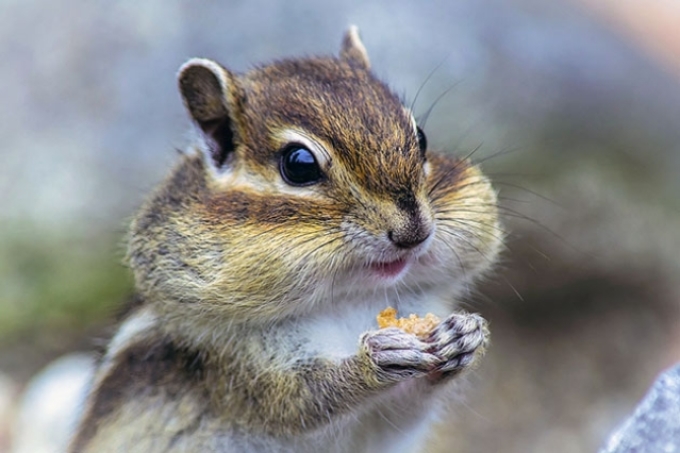
- Sexual maturity of chipmunks is achieved at the age of one year. With the advent of spring in animals, a marriage period begins. As a rule, the decision with whom to mate and when, the female takes.
- She bears the cubs 25-30 days. At the end of pregnancy, from four to eight babies are born. In the first month of their life, they eat only mother’s milk. And after a month and a half, from the genus they become completely independent individuals.
In captivity, the offspring of chipmunks are extremely rare.
- In the wild, chipmunks live from two to five years, but in home conditions, when ensuring proper care, they can live up to 9 years.
Temperament and nature of the chipper
Homemade chipmunk is a playful and very funny animal that leaves no one indifferent.
These rodents are characterized by the following behaviors:
- Extraordinary mobility. In the natural environment, these nimble animals can pass to 12 km per day. In this case, the period of their activity falls precisely for the daytime of the day. So the chipmunks living in captivity, as a rule, do not disturb their owners at night.
- Cleanliness and accuracy. Burunduk celebrates its needs in one specific place. In addition, every day he takes out a litter for drying and ventilation from his house. So the chipmunk cell will not have a specific smell, like most domestic rodents.

- Teenage to storage. Burunduk constantly replenishes its supplies, hiding them everywhere. The newly -made owner of the chipmunk will take some time to learn to distinguish when the animal asks for food to quench hunger, and when to take it to a secluded place.
- Curiosity and lack of fear. Burundunes are usually referred to as a person without fear, even in natural conditions. The point here is again in the natural storage of these rodents. They will constantly ask you for different goodies to replenish their bins. And if you give a pet calmly, without making sudden movements, it will quickly become manual.
- The property of falling into winter hibernation. It lasts, as a rule, from October to March. However, throughout its “rest”, the brownjack may wake up to eat.
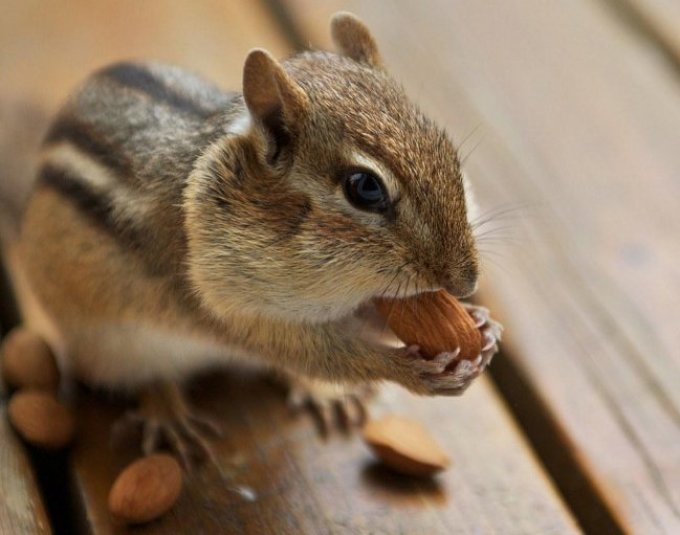
- Burundunes are home in the autumn-winter period become very lazy and slow. At such a time, they do not crawl out of their home for a long time. But at the same time, animals wake up regularly in order to eat and move.
- Individualism. In a natural habitat, the Burunduk prefers to live alone, choosing a separate area for his housing. In relation to uninvited guests, the animal behaves quite aggressively. However, in captivity, it is allowed to contain chipmunks in a cage in pairs. They will be peacefully treated by each other, although the skirmishes between them are quite likely.
- With the beginning of autumn, animals will prepare for winter hibernation and, for this reason, can show aggressiveness. Therefore, during this period it is recommended to plant them in different cells. Also, after the birth of the male cubs, they must be pushed from a female into a separate cage.
- The ability to make funny sounds. In case of hazard approaches, the Burunduk warns its relatives about this, using a rather loud whistle, or trill. Also, with the help of original sounds, these funny animals warn of the upcoming rain.
Housing for home chill: Cage or aviary?
- In the natural habitat, chipmunks arrange their dwelling in the middle depth of minks. Despite the fact that in the wild this animal sets mainly at low altitude, it wonderly climbs trees. Therefore, they construct their “apartment” near trees or shrubs.
- Due to the fact that the Burunduk is a very reserve being, its dwelling usually consists of several nuin which he stores his food supplies. In addition, one of the "premises" is used by a beast as a restroom.
- In the warm season, chipmunks can settle in small hollows or crevices of trees, low from the ground.
- Having decided to get this funny rodent in your house, take care of his home in advance.
Keep in mind that the chipmunk is a very curious and extremely furry animal. If you release it to take a walk around the house, then it will be difficult enough to catch it and send it to the cage back.
Home Burunduk is not too picky for housing conditions. However, the cell intended for him must meet certain requirements:
- Being enough spacious, with several levels and departments, since the animal is very mobile and it is extremely necessary for it to move a lot of space. The cell is preferable about a meter in length and height, and about half a meter wide.
- Metal rods Mandatory in the cage so that the small rodent cannot gnaw them. In addition, the rods should be located Nyshiroko so that the miniature chipmunk does not slip between them and does not jump out of the cage. Sprinkle the bottom with sawdust, which should not be too small so as not to cause irritation of the mucous membrane of the eye in the animal. It is very desirable to place the tray under the cage. Different garbage from it will be poured there.

- The cage must be placed houseIn which the Burunduk will be able to hide from prying eyes and rest, and also hide the food supplies. Materials for this structure should only be the origin of the natural.
- In order for your animal to have the opportunity to equip your own home to your liking, do not forget to put the necessary in the cage: leaflets, hay, twigs. Do not put cotton in a cage, because it can fall into the food of the chipmunk, and it will begin various health problems.
- The presence of all kinds of devices for games is mandatory: laralnok, snag, shelves. They should be made of safe wood: pears, cherries, oak, apple trees. Plants such as a rocket and TIS can be poisonous for chipmunk. A bean wheel will be very pleased with your moving pet, where he can rush and maintain muscle tone and activity. In size, such a wheel should be hbeds half a wheel designed for protein.
- And if you live in a private house and prefer to keep a chipper on the street, do it for it aviary. In a spacious aviary, you can contain several of these playful animals.
When building it, consider the basic requirements:
- An animal aviary must be protected from rains and strong winds.
- The walls of the aviary It is better to make frequent nets so that street animals, birds and large insects cannot get into it.
- Put the wire network on the bottom of the structure and fill it with peat and sawdust on top.

- Place stones, snags, large branches and logs inside.
- You can use birdhouses as houses for chipmunks. Remember that each animal should have its own birdhouse. In addition, additional houses are necessary for reserves that are so loved to make chipmunks. Inside the birdhouses, put dry leaves and hay.
Home chill care at home
- Containing chipmunks at home is no more difficult than other domestic rodents. Many owners claim that even easier, since these animals are very clean, unpretentious in feeding and calm at night.
- Now buying a chipmunk is not as difficult and expensive as some people believe.
Bringing a wild animal to the house can be dangerous, since it can be a carrier of different serious diseases (toxoplasmosis, plague, etc.). Therefore, take the chipper in a pet store or a nursery. Refrain from the purchase of "hand", in which case it is also likely to purchase a sick animal.
In order for your home chill to be satisfied and healthy, follow the main rules for caring for it:
- Remove the cage daily, despite the fact that the chipmunks are very clean. In order for this process to be comfortable, it is better to purchase a cage with a retractable bottom.
- Do not forget periodically remove the remains of food from the "house", who love your chipmunk so much. After all, they tend to deteriorate and can become a seedling of an unpleasant odor and midges.
- Take care of about correct temperature regime For your little pet. This is the key to his health and good mood. The cage must be placed in a darkened place, because the chipmunks are poorly tolerated by high temperatures. However, you should not keep it all the time in the shade either.
- Periodically take the cage in the sun so that the animal can warm up. In the summer months, do this in the morning, when the sun is not too scorching.

- Release your chipmunk Sometimes from the cage run around the house. Let him frolic in the open. However, carefully look after him during such walks so that he does not fit anywhere and does not harm himself. After all, a smarter and a curious animal can easily fall out of the window, get into an open balcony or jump out of the apartment through the opened doors.
- During the winter hibernation, create suitable conditions for a pet: put the cage in a more darkened and cool place.
How to feed a home chill?
- In a natural environment, chipmunks feed on seeds, young plants of plants, various berries and small insects. And for the winter they store acorns, nuts and dried berries.
- In household conditions you can feed the chipmunk ready foodwhich is sold in abundance in pet stores. These animals are quite suitable for feed for hamsters and guinea pigs.
With great pleasure, the home chill will eat natural food:
- Nuts of various types. But do not feed the chipmunk with almonds, since the synical acid that is contained is harmful to rodents.
- Seeds.
- Vegetables and fruits (fresh or dried). It is better to remove the skin, as animals can be sensitive to chemicals that can be on the surface.
- Cereals.
- Leaves of dandelion and cabbage.
- Sprouted wheat or corn seeds.
- Boiled in a boiled egg.
- Low -fat cottage cheese.
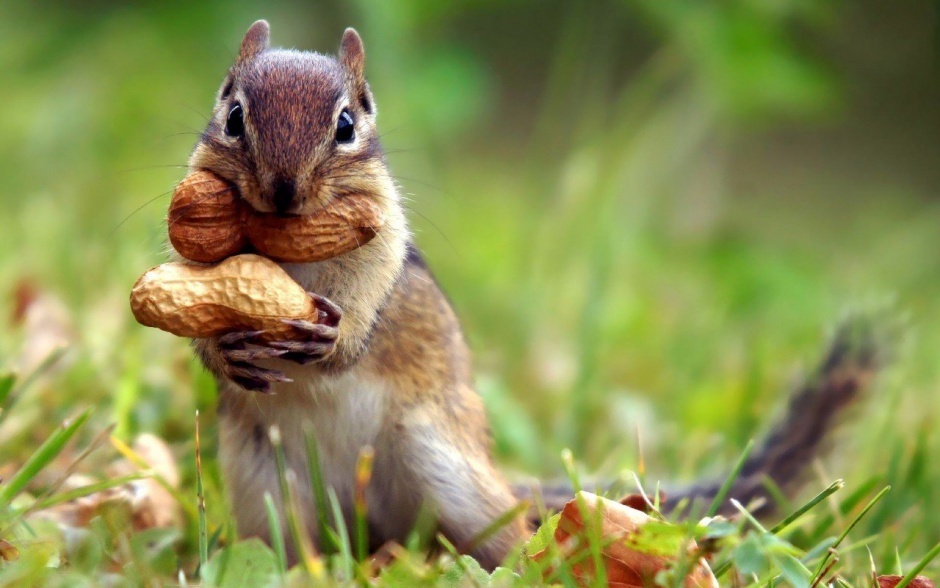
As additional feed, you can use insects - bowls, crickets, bugs, larvae. And the chipmunks will not refuse the treats in the form of cookies or a piece of sugar.
Try not to overfeed your rodent, keep in mind that an adult male of a chipmunk requires up to 10 g of food, and a female - no more than 7 g in a cage of a chipmunk should always be clean and fresh water for drinking. For convenience, you can use a container that is designed for parrots.
- When compiling a diet for your fluffy pet, make sure that hard food is also present in it, hard food.
- It is needed so that the home chill can sharpen the constant incisors. Experts also advise putting a piece of chalk in its cage for the same purposes.
Possible diseases of the home chill
Like any living creature, domestic chipmunks can hurt. Most often, the following ailments can overcome a small rodent:
- Heart diseases. Shocks and stress are capable of causing a heart attack in the chipmunk. The animal in this state lies motionless, his breathing becomes rapid and superficial. If you find such symptoms in your pet, transfer it to the shadow, slightly moisten the wool with water and contact the veterinarian.
- Colds. With improper nutrition and a lack of vitamins At home chipmunk Immunity may decrease. The animal will catch a cold from drafts and temperature changes.
- Liver disease. Most often this is due to the fact that the owners simply overfeed their pets, which leads to their obesity, which affects the liver.
- Disorders of the gastrointestinal tract, recognized by constipation or liquid stool and swollen tummy. The cause of such ailments is also malnutrition.
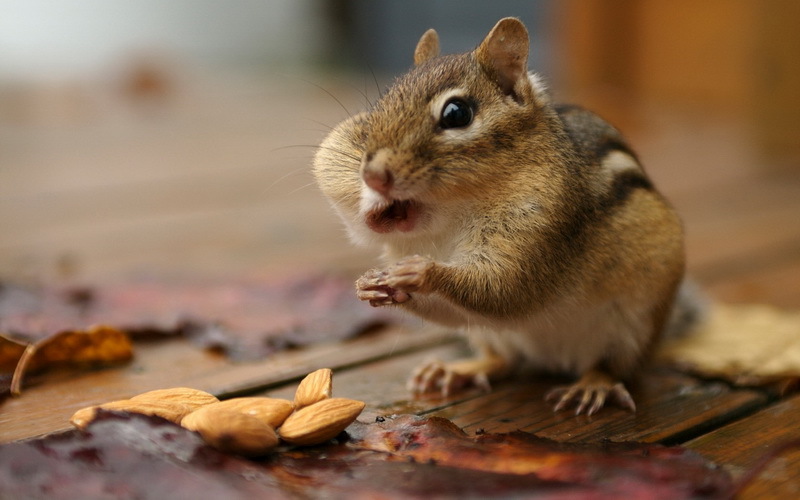
- Especially often problems appear if the owners give a chipmunk milk. It is better to feed the animal with a steep porridge cooked in milk. If your chipmunk has diarrhea, then limit the vegetables in its diet, replacing them with corn flour. And if the animal suffers from constipation, on the contrary, give him more raw vegetables and fruits.
- Heatstroke. This rodent transfers high temperatures very difficult. In the heat, he can even die from overheating.
- Injuries and cuts. Burundunks can often cut down due to their extreme activity and curiosity. Typically, minor injuries do not pose a serious danger to them. It will be quite enough to treat the wound once a day with an antiseptic. If you have several chipmunks in the cage, then it is better to put an injured animal from your relatives to give it the opportunity to heal the wounds in a calm atmosphere.
As you can see, it is not very difficult to contain a chipmunk at home. The main thing is to provide him with regular feeding, proper care and the ability to make stocks.







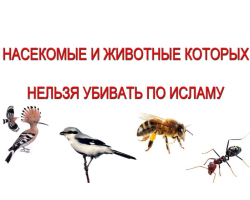
Thank you, the article is good. Tip: Do not feed the chipmunk tonsil, but in the photo a chipmunk with almonds. Where is the logic???
This is just about improper nutrition, as I understand it.